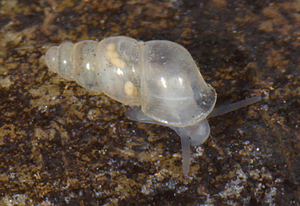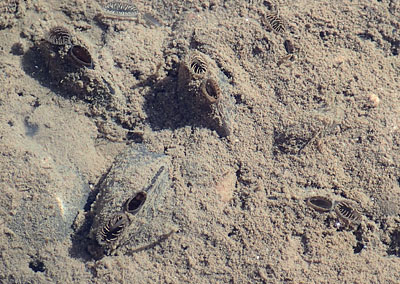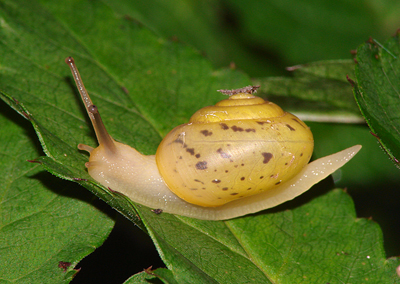The Helicinidae represent a family of very remarkable land snails which is -due to its distribution limits- nearly unknown in Europe. However, they comprise about 1.000 described species that occur in roughly equal portions both in the tropical and subtropical zones of the New World as well as of indopacific and pacific islands including margins of the Asian and Australian continents. The name "Helicinidae" immediately reminds most people of "Helicidae", the most popular group of land snails including e. g. Helix pomatia, but the important two letters "ni" only from the Latin dimunitive of the latter name alluding to superficial similarities of otherwise completely different things. In fact, Helicinidae and Helicidae are at least as distinct from each other as fishes from human beings.
The Helicinidae represent a group of gastropods that - in an evolutionary sense - was the first to evolve to terrestrial life independently from any other and usually better known group of land snails, e. g. the pulmonates. Their closest relatives are found among the marine and freshwater inhabiting Neritopsines. In tropical environments they often contribute a significant portion to the molluscan fauna both in diversity and abundance. Despite those points of interests they were mainly neglected as objects of research.
The last comprehensive revision of the group dates back to A. J. WAGNER (1907-1911) only being followed by scattered papers on restricted areas and the systematic approaches by H. B. BAKER.
Major topics of my interest and research on the Helicinidae include:
* Review of characters with respect to their applicability on species distinction and higher systematics
* Phylogenetic analysis
* Biogeographical questions (e. g. in the Caribbean and on Pacific Islands)
* Population studies and questions of the diversification
* revealing also: fascinating convergences in shell shape and radula morphology
* Revision of the Costa Rican Helicinidae
* Revision of the New Caledonian Helicinidae
* Revision of the Helicinidae of the Lesser Antilles
* including also: discovery and description of new species (e. g. Gambier Islands)








